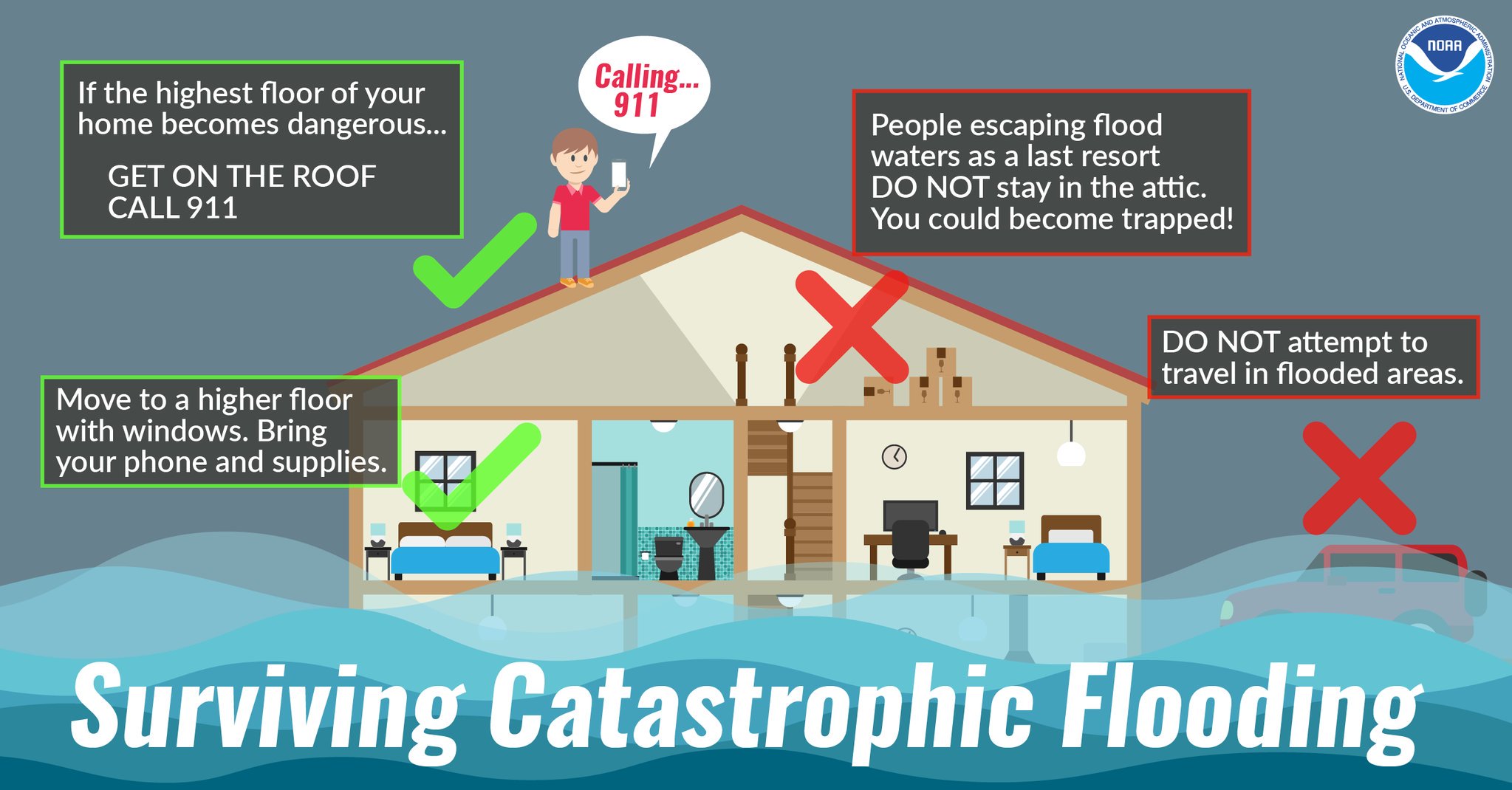Surviving A Flash Flood Emergency: Essential Safety Tips

Table of Contents
Understanding Flash Flood Risks and Warning Signs
Flash floods are characterized by a rapid and sudden rise in water levels, typically within six hours of heavy rainfall. Unlike regular floods, which develop more slowly, flash floods are often unexpected and incredibly dangerous. Several factors contribute to flash flood events:
- Intense rainfall: Prolonged or extremely heavy rainfall in a short period overwhelms drainage systems.
- Dam or levee failures: Structural failure can release large volumes of water rapidly, causing downstream flash flooding.
- Rapid snowmelt: A sudden thaw of accumulated snow, especially during spring, can quickly raise water levels in rivers and streams.
Recognizing warning signs is paramount. Be vigilant and look out for:
- A sudden, dramatic increase in water levels in rivers, streams, or creeks.
- Rapidly flowing water, even in normally dry areas.
- Heavy rainfall in your immediate area or in upstream regions.
- Official flash flood warnings or watches issued by your local meteorological service or emergency management agency. These alerts should be taken very seriously.
- Changes in water color or an unusual smell, which might indicate debris or contamination.
Constantly monitoring weather reports and official alerts is critical. Sign up for emergency alerts on your phone and familiarize yourself with your local emergency broadcast system.
Creating a Flash Flood Emergency Plan
Proactive planning is your best defense against a flash flood emergency. A well-thought-out plan can dramatically increase your chances of survival. This involves several key steps:
- Identify safe evacuation routes: Map out multiple escape routes from your home and workplace, considering potential road closures.
- Assemble a flash flood emergency kit: This kit should include:
- Sufficient drinking water (at least one gallon per person per day).
- Non-perishable food supplies.
- A well-stocked first-aid kit with essential medications.
- Important documents (identification, insurance information) stored in waterproof bags.
- Flashlights and extra batteries.
- A portable radio (battery-powered).
- Whistle for signaling.
- Designate a family meeting point: Establish a safe location outside your home where family members can reunite after evacuation.
- Develop a communication plan: Identify alternative communication methods in case cell service is disrupted (e.g., pre-arranged meeting places, two-way radios).
- Secure a backup power source: A portable generator or extra batteries can power essential electronic devices during a power outage.
Evacuating During a Flash Flood Emergency
Knowing when and how to evacuate is vital. If you receive a flash flood warning, evacuate immediately. Never attempt to drive through floodwaters. Even a few inches of water can sweep a vehicle away.
- Move valuable items and pets to a safe, elevated location.
- Follow instructions from emergency personnel. They are best equipped to guide you to safety.
- Use your pre-planned evacuation routes.
- Seek shelter at a designated evacuation center or with family/friends in a safe, elevated area.
Staying Safe During a Flash Flood
If evacuation isn't possible, stay indoors and move to the highest level of your home or building. Avoid basements.
- If trapped in a vehicle, and it's safe to do so, try to escape immediately and move to higher ground. If escape is impossible, call for help and stay on the roof.
- After the floodwaters recede, avoid contact with debris and downed power lines; these can be extremely dangerous.
Post-Flash Flood Safety and Recovery
Returning home too early can be extremely dangerous. Wait for official clearance from authorities.
- Once it is safe to return, inspect your property for damage.
- Contact your insurance company to report losses.
- Avoid contact with floodwaters, which may be contaminated with sewage, chemicals, and other hazards.
- Report damage to local authorities to help assess the overall impact of the flood.
- When cleaning up, wear protective gear (boots, gloves, masks) to avoid hazards.
Preparing for and Surviving Flash Flood Emergencies
Surviving a flash flood emergency requires preparedness and swift action. Understanding flash flood risks, creating a comprehensive emergency plan, and knowing what actions to take during and after a flood are critical for your safety. Don't wait until it's too late. Prepare for a flash flood emergency today! Ensure your family's safety by creating a detailed flash flood survival plan. Learn more about flash flood safety and protect yourself and your loved ones.

Featured Posts
-
 The Hells Angels Power Violence And Brotherhood
May 25, 2025
The Hells Angels Power Violence And Brotherhood
May 25, 2025 -
 Porsche 956 Nin Muezedeki Oezel Sergisi
May 25, 2025
Porsche 956 Nin Muezedeki Oezel Sergisi
May 25, 2025 -
 Kako Penzioneri Zive U Luksuzu Price Iz Stvarnosti
May 25, 2025
Kako Penzioneri Zive U Luksuzu Price Iz Stvarnosti
May 25, 2025 -
 Real Madrid In Doert Oyuncusu Uefa Sorusturmasinin Ayrintilari
May 25, 2025
Real Madrid In Doert Oyuncusu Uefa Sorusturmasinin Ayrintilari
May 25, 2025 -
 Major Gun Trafficking Bust In Massachusetts 18 Brazilian Nationals Face Charges
May 25, 2025
Major Gun Trafficking Bust In Massachusetts 18 Brazilian Nationals Face Charges
May 25, 2025
Latest Posts
-
 2025s Best Nike Running Shoes A Buyers Guide
May 26, 2025
2025s Best Nike Running Shoes A Buyers Guide
May 26, 2025 -
 Saksikan Live Trans7 Sprint Race Moto Gp Inggris Rins Pecah Rekor Marquez Jatuh
May 26, 2025
Saksikan Live Trans7 Sprint Race Moto Gp Inggris Rins Pecah Rekor Marquez Jatuh
May 26, 2025 -
 Top Nike Running Shoes Of 2025 Choosing The Right Shoe For You
May 26, 2025
Top Nike Running Shoes Of 2025 Choosing The Right Shoe For You
May 26, 2025 -
 Moto Gp Inggris Live Di Trans7 Jadwal Tayang Sprint Race Rekor Rins Dan Kecelakaan Marquez
May 26, 2025
Moto Gp Inggris Live Di Trans7 Jadwal Tayang Sprint Race Rekor Rins Dan Kecelakaan Marquez
May 26, 2025 -
 Jangan Sampai Ketinggalan Jadwal Detail Moto Gp Inggris
May 26, 2025
Jangan Sampai Ketinggalan Jadwal Detail Moto Gp Inggris
May 26, 2025
